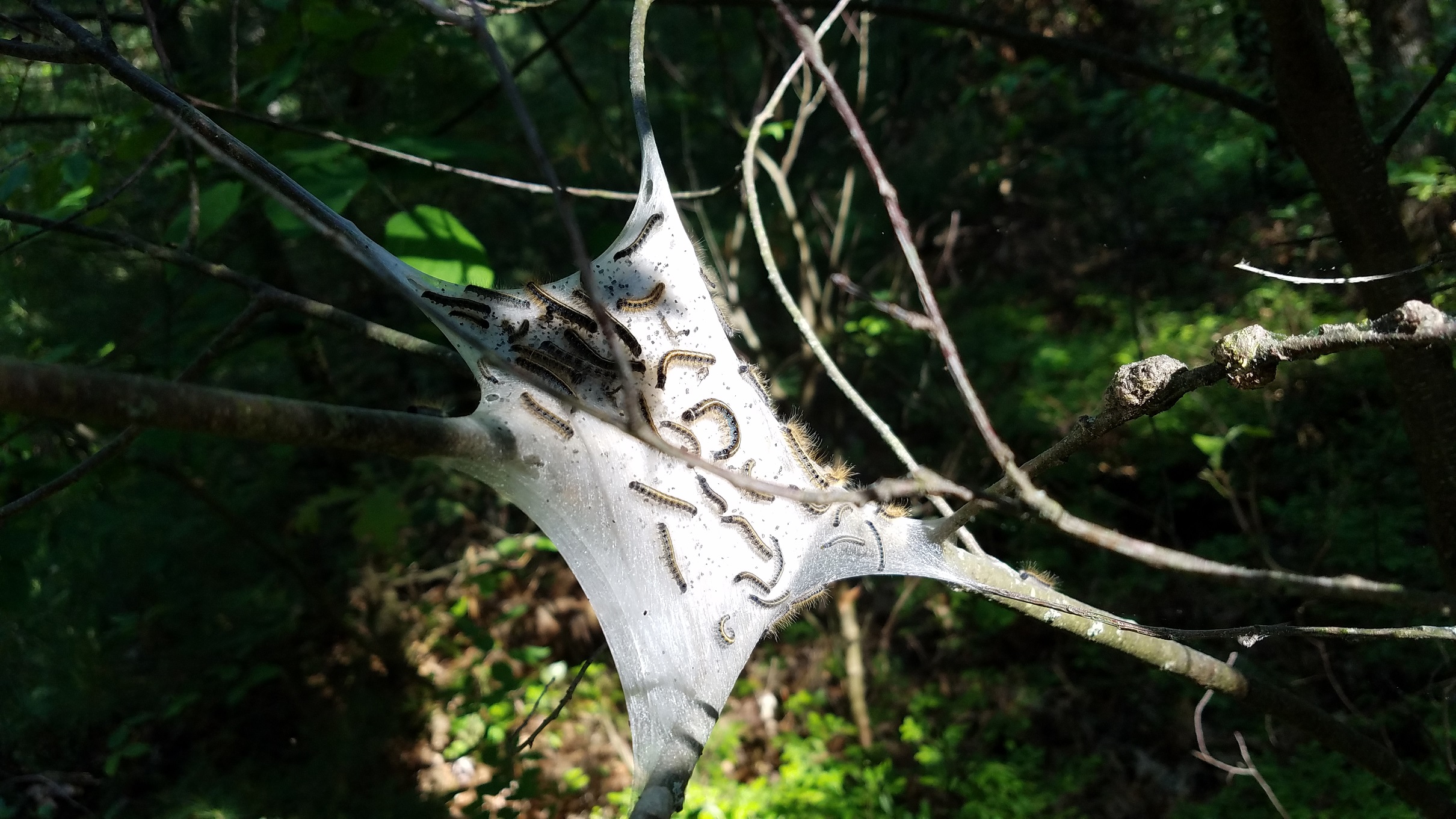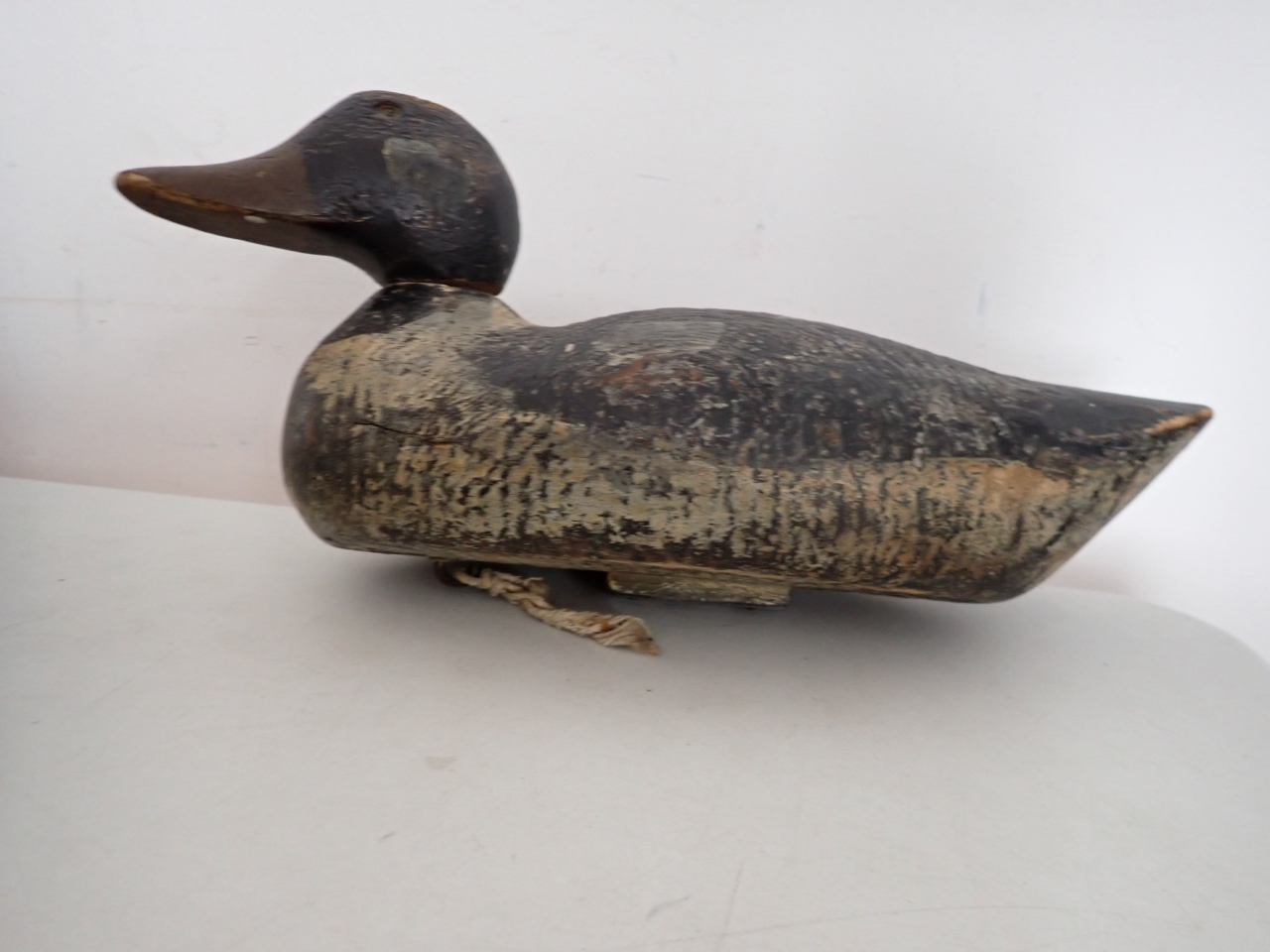
Gardening
Late Winter Tent Caterpillar Management

Eastern tent caterpillars crawling on top of their webby tent.
Photo courtesy of MelindaMyers.com
Start this year's tree pest management with a stroll through the landscape. As you enjoy the scenery, be sure to look for any unwelcome pests that may be overwintering on the twigs of trees.
Look for and remove egg masses of tent caterpillars now through spring. These clusters of eggs look like shiny blobs of mud surrounding the twigs. Each egg mass contains hundreds and in some cases thousands of eggs.
The forest tent caterpillar is the most widely distributed tent caterpillar. It attacks a variety of trees that vary with the region. Check any sugar maples, aspen, cherries, apples, oaks, birch, ash, alder, elm, basswood, or water tupelo trees growing in your landscape.
Trees may suffer damage when large populations of these caterpillars devour the majority of the tree's leaves for several years in a row. This can result in reduced tree growth, top dieback, and tree mortality. There are several natural predators of this insect pest so working with nature is a great way to help reduce damage. Remove the egg masses found on small twigs that are more easily reached on smaller trees. After the eggs hatch, look for the caterpillars in a silken mat, not a tent like the other tent caterpillars. Remove the young caterpillars from branch tips or squash those resting on the main stem in the evening or on cool days.
You may also see similar egg masses of the Western or Eastern tent caterpillars depending on where you live. Their egg masses look similar to those of the forest tent caterpillar. Remove the egg masses of these tent caterpillars in spring before the eggs hatch.
Once the eggs hatch, the caterpillars begin forming a webby tent in the crotch of the tree. As they feed and grow, the tent expands. They remain in the tent during the hot part of the day and rainy weather.
Knock the tents, caterpillars and all, out of the tree when the majority of caterpillars are in the tent. Smash or dump the caterpillars in a can of soapy water.
Do not burn the tents. This old practice is hazardous and the fire can severely damage the tree, much worse than the insects.
Control is usually not needed on healthy and established trees. If you decide to intervene, consider using an organic insecticide with the active ingredient Bacillus thuringiensis var. kurstaki (Btk). It is effective when applied to the tents soon after they start to form and when the caterpillars are small. Just spray the tent and the surrounding 1.5 feet of leaves. These products only kill caterpillars and will not harm other insects or birds feeding on these pests.
When working with nature, we have help from predatory insects and songbirds when managing these and other garden pests. Taking time this winter for a bit of prevention can go a long way in reducing damage from tent caterpillars.
Melinda Myers has written more than 20 gardening books, including The Midwest Gardener's Handbook, 2nd Edition and Small Space Gardening. She hosts The Great Courses "How to Grow Anything" DVD series and the nationally-syndicated Melinda's Garden Moment TV & radio program. Myers is a columnist and contributing editor for Birds & Blooms magazine. Her web site is www.MelindaMyers.com.
Antiques
Antique Duck Decoys

Photo courtesy of Wayne Tuiskula
Antique wooden duck decoys became popular collectibles beginning in the 1950s and 1960s and continue to increase in popularity. Collectors compete with institutional buyers at auction for some of the best examples. Duck decoys are featured in many museums including the Havre De Grace Decoy Museum in Maryland, the Core Sound Waterfowl Museum in North Carolina and the Shelburne Museum in Vermont.
Duck decoys have a long history. The Las Vegas Review-Journal reported that the oldest known duck decoys were discovered in 1912 inside of Lovelock Cave in Lovelock, Nevada. The decoys were used by the Northern Paiutes and date back to 400 BC to 100 AD.
The Smithsonian reported that duck meat was a delicacy in the late 1800s and 1900s. Hunters learned how to make their own duck decoys from Native Americans, who made them out of reeds. Duck hunting became popular and celebrities and presidents joined duck hunt clubs. Club members wanted more realistic decoys, so they started having their own made. The decoys turned into an artform and there are many carvers still producing high quality decoys today.
The auction site invaluable.com lists the following factors in determining duck decoy value:
Maker
Region
Decoy species
Condition
Scarcity
Strength of maker attribution
Size
The "strength of maker attribution" refers to the provenance of the decoy. It's unlikely that you'll find a maker name for an older duck. The more evidence showing it was made by a particular maker, the more likely buyers will feel comfortable buying it and the higher the value will be. Shore bird hunting was outlawed in 1928, so these decoys are more valuable. Wood quality varied by location, making region an important factor. Scarce decoys and larger sized ones also are more valuable.
Here are some examples of decoys that brought high prices at auction. A Surace Cobb Black Duck Decoy by Nathan F. Cobb Jr. of Cobb Island, VA sold for $36,000 in February 2021. An early Humpback Black Duck Decoy by The Ward Brothers of Crisfield, Maryland brought $75,000 in 2023. Painted Greater Yellowlegs by William Bowman of Lawrence, Long Island went for $78,000 in 2007. A Canvasback Hen by Elmer Crowell of East Harwich, MA sold for $79,000 in 2008. A Ruddy Turnstone by John Dilley of Quogue, Long Island, NY reached $85,000 in 2013. A Widgeon Drake by Joseph Lincoln of Accord, MA (a section of Norwell) brought $97,750 in 2014. A Massachusetts carver's decoy set a record in 2007. An exceptional and rare red-breasted merganser hen by Lothrop Holmes of Kingston, MA sold for $856,000, providing the consignor with a substantial nest-egg.
We will be offering duck decoys from two local estates in one of our upcoming spring auctions. Our next auction is another online auction (session 7) of model trains, diecast cars and other toys from a West Boylston estate. Our Beacon Street, Boston online estate will also begin this month. We are accepting consignments for our major spring online auction. Please visit our website www.centralmassauctions.com for links to upcoming events.
Please contact us at: www.centralmassauctions.com (508-612- 6111) info@centralmassauctions.com for antiques and collectibles auction services.